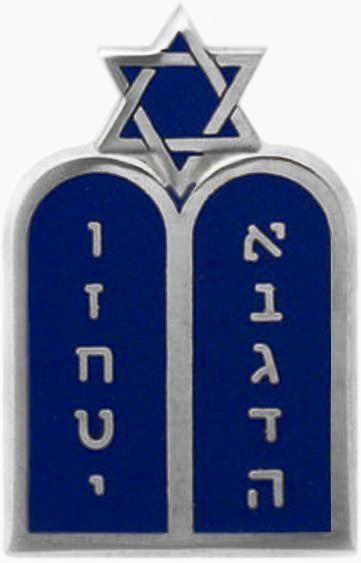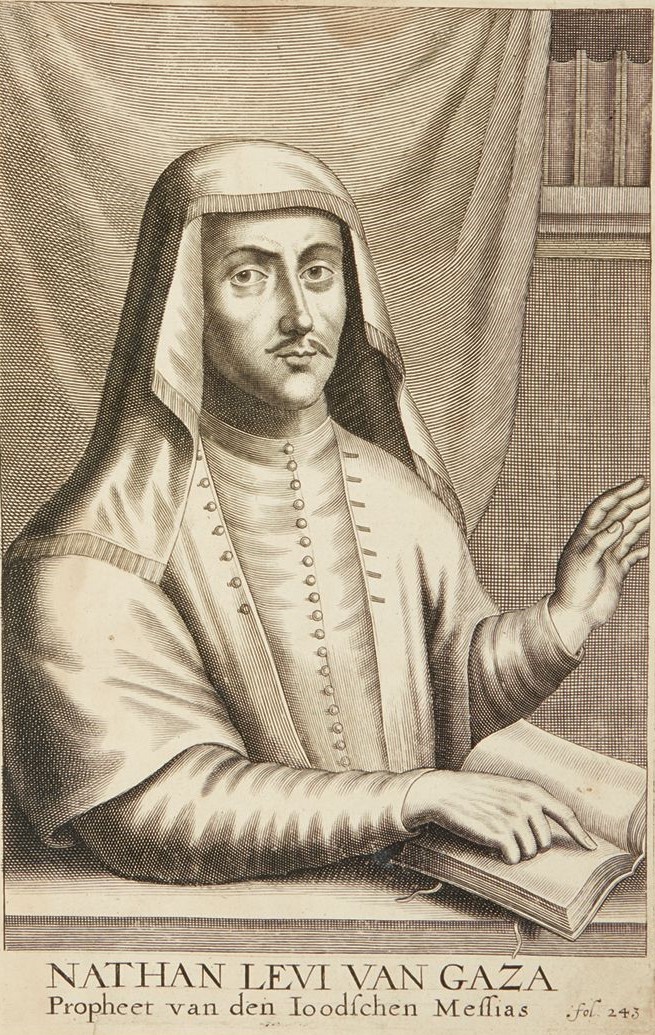|
Meir Bar Hiyya Rofe
Meir bar Hiyya Rofe (17th century; the ''Encyclopaedia Judaica'' article gives the years of 1610 and 1690 as the possible years of birth and death respectively) was a Hebron rabbi, known among other things for his tours of Europe as an emissary from the Holy Land on behalf of the Jewish community of Hebron. His father, Hiyya Rofe, was a very learned rabbi from Safed. Orphaned at a young age, Meir studied in Hebron, leaving about 1648 as an emissary to Italy, Holland, and Germany. On his return journey, he stayed for two years in Italy to publish ''Ma'aseh Ḥiyya'' (Venice, 1652), his father's talmudic novellae and responsa. In Amsterdam he had influenced the wealthy Abraham Pereyra to found a ''yeshiva'' in Hebron to be called ''Hesed le-Avraham'', of which Meir himself became the head scholar. Meir was in Gaza in 1665 when Nathan of Gaza began to prophecy on the messianism of Sabbatai Zevi. In a subsequent letter to Amsterdam, to Abraham Pereyra, he wrote that "Nathan of Gaza is a ... [...More Info...] [...Related Items...] OR: [Wikipedia] [Google] [Baidu] |
Encyclopaedia Judaica
The ''Encyclopaedia Judaica'' is a 22-volume English-language encyclopedia of the Jewish people, Judaism, and Israel. It covers diverse areas of the Jewish world and civilization, including Jewish history of all eras, culture, holidays, language, scripture, and religious teachings. As of 2010, it had been published in two editions accompanied by a few revisions. The English-language ''Judaica'' was also published on CD-ROM. The CD-ROM version has been enhanced by at least 100,000 hyperlinks and several other features, including videos, slide shows, maps, music and Hebrew pronunciations. While the CD-ROM version is still available, the publisher has discontinued it. The encyclopedia was written by Israeli, American and European professional subject specialists. History Preceding attempts Between 1901 and 1906 ''The Jewish Encyclopedia'' had been published in 12 volumes. It was followed by the ''Jüdisches Lexikon I–II'' (1927–28, in German), ''Encyclopaedia Judaica I–II ... [...More Info...] [...Related Items...] OR: [Wikipedia] [Google] [Baidu] |
Gale (publisher)
Gale is a global provider of research and digital learning resources. The company is based in Farmington Hills, Michigan, west of Detroit. It has been a division of Cengage since 2007. The company, formerly known as Gale Research and the Gale Group, is active in research and educational publishing for Public libraries, public, Academic libraries, academic, and school libraries, and businesses. The company is known for its full-text magazine and newspaper databases, Gale OneFile (formerly known as Infotrac), and other online databases subscribed by libraries, as well as multi-volume reference works, especially in the areas of religion, history, and social science. Founded in Detroit, Michigan, in 1954 by Frederick Gale Ruffner Jr., the company was acquired by the International Thomson Organization (later the Thomson Corporation) in 1985 before its 2007 sale to Cengage. History In 1998, Gale Research merged with Information Access Company and Primary Source Media, two companies a ... [...More Info...] [...Related Items...] OR: [Wikipedia] [Google] [Baidu] |
17th-century Rabbis From The Ottoman Empire
The 17th century lasted from January 1, 1601 ( MDCI), to December 31, 1700 ( MDCC). It falls into the early modern period of Europe and in that continent (whose impact on the world was increasing) was characterized by the Baroque cultural movement, the latter part of the Spanish Golden Age, the Dutch Golden Age, the French ''Grand Siècle'' dominated by Louis XIV, the Scientific Revolution, the world's first public company and megacorporation known as the Dutch East India Company, and according to some historians, the General Crisis. From the mid-17th century, European politics were increasingly dominated by the Kingdom of France of Louis XIV, where royal power was solidified domestically in the civil war of the Fronde. The semi-feudal territorial French nobility was weakened and subjugated to the power of an absolute monarchy through the reinvention of the Palace of Versailles from a hunting lodge to a gilded prison, in which a greatly expanded royal court could be more easily k ... [...More Info...] [...Related Items...] OR: [Wikipedia] [Google] [Baidu] |
Rabbis In Ottoman Palestine
A rabbi () is a spiritual leader or religious teacher in Judaism. One becomes a rabbi by being ordained by another rabbi – known as ''semikha'' – following a course of study of Jewish history and texts such as the Talmud. The basic form of the rabbi developed in the Pharisaic (167 BCE–73 CE) and Talmudic (70–640 CE) eras, when learned teachers assembled to codify Judaism's written and oral laws. The title "rabbi" was first used in the first century CE. In more recent centuries, the duties of a rabbi became increasingly influenced by the duties of the Protestant Christian minister, hence the title "pulpit rabbis", and in 19th-century Germany and the United States rabbinic activities including sermons, pastoral counseling, and representing the community to the outside, all increased in importance. Within the various Jewish denominations, there are different requirements for rabbinic ordination, and differences in opinion regarding who is recognized as a rabbi. For examp ... [...More Info...] [...Related Items...] OR: [Wikipedia] [Google] [Baidu] |
Rabbis In Hebron
A rabbi () is a spiritual leader or religious teacher in Judaism. One becomes a rabbi by being ordained by another rabbi – known as ''semikha'' – following a course of study of Jewish history and texts such as the Talmud. The basic form of the rabbi developed in the Pharisaic (167 BCE–73 CE) and Talmudic (70–640 CE) eras, when learned teachers assembled to codify Judaism's written and oral laws. The title "rabbi" was first used in the first century CE. In more recent centuries, the duties of a rabbi became increasingly influenced by the duties of the Protestant Christian minister, hence the title "pulpit rabbis", and in 19th-century Germany and the United States rabbinic activities including sermons, pastoral counseling, and representing the community to the outside, all increased in importance. Within the various Jewish denominations, there are different requirements for rabbinic ordination, and differences in opinion regarding who is recognized as a rabbi. For examp ... [...More Info...] [...Related Items...] OR: [Wikipedia] [Google] [Baidu] |
Modena
Modena (, , ; egl, label=Emilian language#Dialects, Modenese, Mòdna ; ett, Mutna; la, Mutina) is a city and ''comune'' (municipality) on the south side of the Po Valley, in the Province of Modena in the Emilia-Romagna region of northern Italy. A town, and seat of an archbishop, it is known for its car industry since the factories of the famous Italian upper-class sports car makers Ferrari, De Tomaso, Lamborghini, Pagani (automobile), Pagani and Maserati are, or were, located here and all, except Lamborghini, have headquarters in the city or nearby. One of Ferrari's cars, the Ferrari 360, 360 Modena, was named after the town itself. Ferrari's production plant and Formula One team Scuderia Ferrari are based in Maranello south of the city. The University of Modena, founded in 1175 and expanded by Francesco II d'Este in 1686, focuses on economics, medicine and law, and is the second oldest :wikt:athenaeum, athenaeum in Italy. Italian military officers are trained at the Milit ... [...More Info...] [...Related Items...] OR: [Wikipedia] [Google] [Baidu] |
Abraham Rovigo
Abraham Rovigo (born ca. 1650 in Modena, died 1713 in Mantua) was a Jewish scholar, rabbi and kabbalist. Biography Rovigo studied in Venice in the ''yeshiva'' of Moses Zacuto and devoted himself to study the Kabbalah. He was one of the main supporters in Livorno of the moderate wing of the Sabbatean movement, and gathered around him several important followers of Sabbatai Zevi, such as Behr Perlhefter, Mordechai Mokiach and Mordechai Ashkenazi. In 1700–1701 he spent one year in Fürth Fürth (; East Franconian: ; yi, פיורדא, Fiurda) is a city in northern Bavaria, Germany, in the administrative division (''Regierungsbezirk'') of Middle Franconia. It is now contiguous with the larger city of Nuremberg, the centres of the t ..., in order to proofread and manage the publishing of the manuscripts of the Zoharic commentary of his pupil Mordecai Ashkenazi. One year later, he and a group of followers settled in the Holy Land. Rovigo came from a wealthy Modena family, and wa ... [...More Info...] [...Related Items...] OR: [Wikipedia] [Google] [Baidu] |
Sabbatai Zevi
Sabbatai Zevi (; August 1, 1626 – c. September 17, 1676), also spelled Shabbetai Ẓevi, Shabbeṯāy Ṣeḇī, Shabsai Tzvi, Sabbatai Zvi, and ''Sabetay Sevi'' in Turkish, was a Jewish mystic and ordained rabbi from Smyrna (now İzmir, Turkey). A kabbalist of Romaniote or Sephardic origin, Zevi, who was active throughout the Ottoman Empire, claimed to be the long-awaited Jewish Messiah. He was the founder of the Sabbatean movement, whose followers subsequently came to be known as Dönme (converts) or crypto-Jews. Upon arriving in Constantinople in February 1666, Sabbatai was imprisoned on the order of the grand vizier Köprülüzade Fazıl Ahmed Pasha; in September of that same year, after being moved from different prisons around the capital to Adrianople, (modern Edirne, the imperial court's then seat) to be judged on accusations of fomenting sedition, Sabbatai was given the choice of either facing death by some type of ordeal, or of converting to Islam by the Grand V ... [...More Info...] [...Related Items...] OR: [Wikipedia] [Google] [Baidu] |
Nathan Of Gaza
Nathan of Gaza ( he, נתן העזתי; 1643–1680) or Nathan Benjamin ben Elisha Hayyim haLevi Ashkenazi or Ghazzati) was a theologian and author born in Jerusalem. After his marriage in 1663 he moved to Gaza, where he became famous as a prophet for the Jewish messiah claimant Sabbatai Zevi. Biography Nathan of Gaza was born in Jerusalem around 1643-1644; he died on Friday, January 11, 1680 in Macedonia. Although he grew up in Jerusalem, his parents were not born in Ottoman Syria. On the contrary, they had immigrated from Poland or Germany. His father, Elisha Hayyim ben Jacob, was a distinguished rabbinic intellectual who served as an envoy of Jerusalem collecting donations for impoverished Jews. During his travels he would distribute kabbalistic works which he had obtained in Jerusalem. Upon settling in Ottoman Palestine, Elisha Hayyim ben Jacob took on the surname "Ashkenazi" as a means of differentiating his family and himself from the largely Sephardic inhabitants of the O ... [...More Info...] [...Related Items...] OR: [Wikipedia] [Google] [Baidu] |
Yeshiva
A yeshiva (; he, ישיבה, , sitting; pl. , or ) is a traditional Jewish educational institution focused on the study of Rabbinic literature, primarily the Talmud and halacha (Jewish law), while Torah and Jewish philosophy are studied in parallel. The studying is usually done through daily ''shiurim'' (lectures or classes) as well as in study pairs called '' chavrusas'' (Aramaic for 'friendship' or 'companionship'). ''Chavrusa''-style learning is one of the unique features of the yeshiva. In the United States and Israel, different levels of yeshiva education have different names. In the United States, elementary-school students enroll in a ''cheder'', post- bar mitzvah-age students learn in a ''metivta'', and undergraduate-level students learn in a ''beit midrash'' or ''yeshiva gedola'' ( he, ישיבה גדולה, , large yeshiva' or 'great yeshiva). In Israel, elementary-school students enroll in a ''Talmud Torah'' or ''cheder'', post-bar mitzvah-age students l ... [...More Info...] [...Related Items...] OR: [Wikipedia] [Google] [Baidu] |
.jpg)





